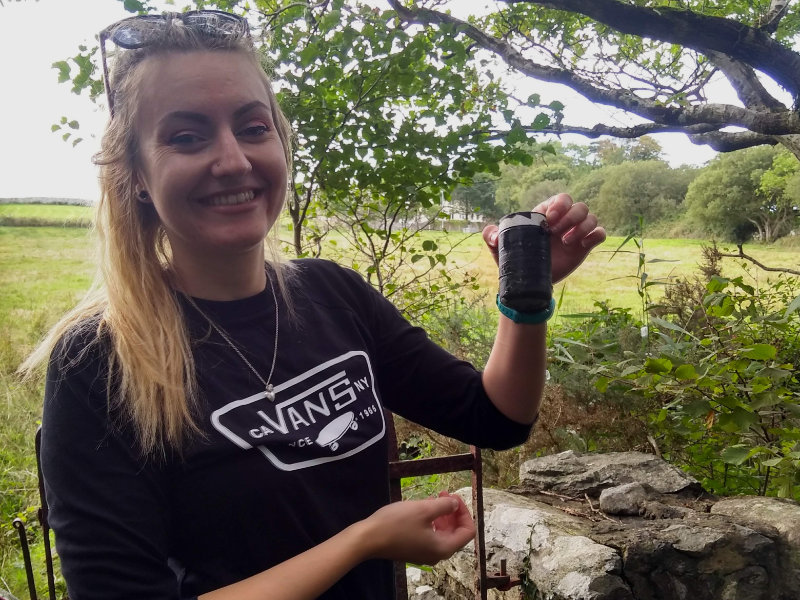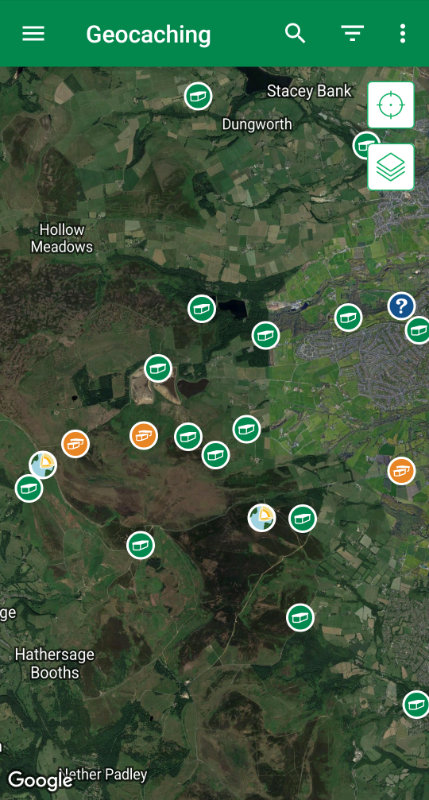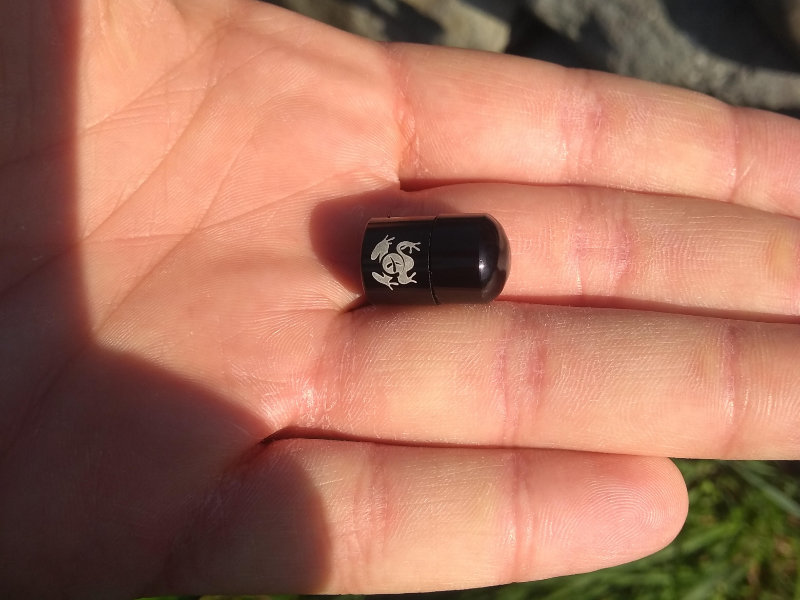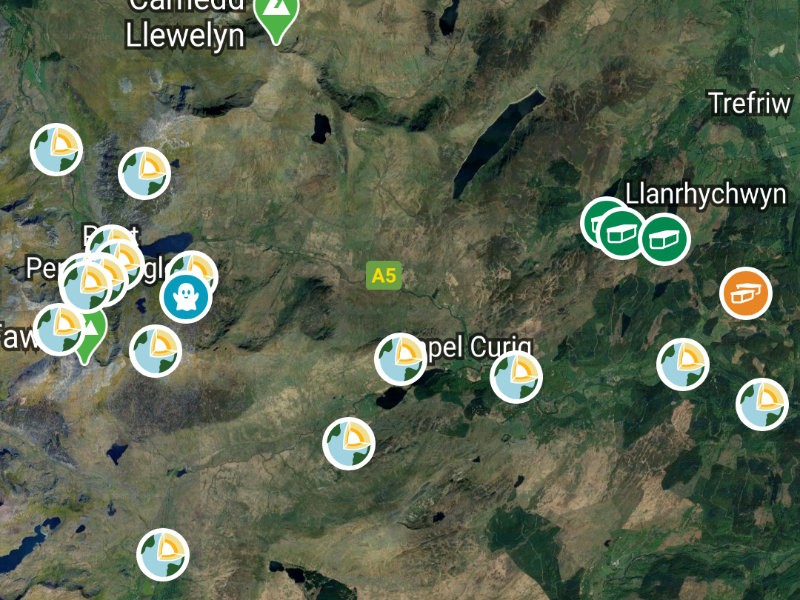Welcome to 'Try something new...', this is hopefully the first in a series of articles encouraging you to get out there and, as you may have guessed, try something new. What that thing is may vary wildly, sometimes we will be well experienced and other times we will be a beginner trying it for the first time just like you! For this first one, what better subject to cover than a little hobby that will encourage you to get outside and get some fresh air.
Its another nice day and you're looking for something to do, but you have nothing planned so what is there to do? It is probably a little late to start mapping out a grand adventure, but even with nowhere to go you still want to make the most of your day. The last thing you want to do is end up wandering aimlessly, leaving you feeling like you have wasted a day. One of my favourite solutions to this problem is Geocaching, once you get into it not only will you have a goal to work towards but you will find yourself exploring new locations you may have never considered before just to find one more geocache. Let's break down what it is, how you get into it and how you can even contribute to the community around it.
What is Geocaching?
In the simplest terms, Geocaching is a game of treasure hunting: given a marker on a map and a description you search the area to find a geocache (or just cache, the words can be used interchangeably). It is a game that shares it's core concepts with a number of other 'find the location' games but with the addition of trying to hunt down the geocache itself adding an extra element to the fun!
There are hints and typically comments to help you out when searching, plus the activity log may provide additional clues and will let you know if anyone else has found it recently. The geocaches themselves range from tiny magnetic spots to larger ammo case containers, some of them are incredibly creative from watertight containers fixed into stones for camouflage to (my personal favourite so far) a magnetic nano-sized cache disguised as a snail. The smaller caches typically contain just a text log to sign, but larger ones may contain little trinkets for you to exchange with something of yours. There are a handful of different types of caches, which I will go into a little bit, but the website/app will provide an up to date list with an explanation of how they work and what you need to do.
With the concept understood, let us get into the details and hopefully before long you will be grabbing your first geocache, if not creating a cache of your own!

How do I get started?
Firstly, the only real equipment you will need for geocaching is a mobile device and a pen, you can also carry some little trinkets to exchange at a cache. You can get started by heading over to the geocaching.com website (or via an app, see links below for Google Play/App Store) and register an account, that will instantly give you access to the free tier of geocaches. On the free tier, you are generally quite limited on what you can access, but there is a free trial I recommend grabbing so you can give the fully-featured geocaching experience a proper test. From this point forward I will be referencing the app rather than the website, considering this is a game you play on the go the app is the way I would expect most players to engage with the game.
Open the app up to the map and browse your local area, there will be a handful of symbols dotted all around the screen, find a marker you're interested in and click on it to get more information. Most caches will be the traditional type, but some have unique features and gameplay that the app will explain with a pop-up. The first thing I do is check the activity log to make sure it has been found recently, the last thing you want to do is waste an hour on a cache that cannot be found. Then, hit the navigation button and get walking; the navigation system will draw a line to your goal and will alert you when you're getting close.
Once you are in the general vicinity of the cache, take some time to read the description. Generally, descriptions will feature some hidden clues or a more direct instruction on where you can find the cache but this is not always the case. If I had one criticism of geocaching in general, I have found descriptions and hints to be very inconsistent between caches; a description should ideally contain subtle clues and the hint should be useful without completely giving away the answer. The number of times I have clicked the hint only to find "Look exactly here to find it" is disappointing (I want a hint, not the answer), but at the same time you have no choice because the description gives absolutely nothing to go on. My go-to strategy is to spend some time searching the area while studying the description, before looking at the activity log to see if any of my fellow players have offered up some clues - be careful here with images as some people will spoil the answer. If all else fails, click on the hint button for the final bit of help, you can choose to use the hint before the activity log if you prefer, but as I mentioned previously, with how often the hint is just the answer I try to leave it until last. With any luck, you will now have the cache - hit log in the app, mark it as found and leave a message, a simple "TFTC" (Thanks for the Cache) is plenty but feel free to leave hints for difficult caches or note any issues with the geocache itself. If you fail to find it you should still log it as DNF because this can give other players a good idea as to whether the cache is missing or not, try to include any useful information such as how long you searched for or if the description/hint seem outdated (e.g. reference a tree that is now a stump or a hedgerow that has been removed).
That is the whole process of finding a geocache, repeat as you wander around your local area for more and more caches! If you are looking for something a little different you can find many series of geocaches that will take you on walks, or try out some of the other cache types:
- Mystery - May require some kind of puzzle to be solved to find the actual coordinates of the cache
- Multi-Cache - A combination of locations that will end with the cache itself, each location typically revealing a clue for the next location
- EarthCache - An educational location with an opportunity to learn a little about your surroundings, to log one of these caches there may be a question pertaining to its location
There are many more types of caches but these are subject to change (and retirement), you can view the type of cache via the app or see a breakdown of all types here.

How do I contribute?
The game itself is entirely maintained by community members and the longer you play the more you may feel like giving something back. At any point, you can alert a caches creator to a full log or damage to the cache, but if you want to carry a few pieces of paper and even some pens so you can restock caches then the cache owner, and the community at large, will be very grateful! If you do any repairs like this leave a note in the activity log so the cache owner knows it has been taken care of.
Want to create a geocache yourself? Well, there are a few things to consider before doing so including a specific set of guidelines and advice you should follow before placing a cache. The general recommendation is to have a wealth of experience finding caches before you attempt to create one yourself, that way you have a good idea of what makes a good cache (and you will have probably experienced some of the more frustrating ones too). When you are ready to create your own, you must consider if you even have permissions to place a cache at a location - private land could result in trespassing and even public land will have a grounds-keeper or manager that you should get permission from prior to placing a geocache. Remember: a cache that you didn't get approval for is just litter in the eyes of the landowner. Secondly, you need to consider the location carefully, including the following:
- Make sure your geocache is somewhere safe to access, ideally all year round but at the very least it should be accessible more often than not. Further to this, consider the surrounding areas in terms of safety - if your cache is near to somewhere that could be dangerous, such as a sheer drop, at the very least include a note in your description to steer players away from it.
- Make sure your geocache is away from areas that see heavy foot traffic, to prevent it from unintentionally getting damaged or removed by non-players. Try to keep geocaches away from sightlines of public paths if at all possible, at the very least a tree or two to obscure it from view can help keep players from looking suspicious to non-players.
- Make sure your geocache isn't too close to any other caches.
- Geocaches should not require the destruction of property, including digging, in order to be found.
If you can, you should also try to be a positive influence where ever you end up placing your geocache, do things like clean up any trash in the area - not only is this a great thing to do generally but it will this make your cache easier to find, the last thing you want is for players to have to sift through trash to find your cache.
If you employ a little bit of common sense when placing your geocache you should be safe. Once a location is selected it is time to select your container, plenty of websites offer pre-made geocache packaging, including the shop on the geocaching website, but it is perfectly acceptable to make something custom. As long as your container is able to protect its contents from the elements then you are good to go, often a snap-close plastic container is used with its contents in a plastic bag for a double layer of protection. The more creative you can be with this the better and with a bit of modification you can make something that will blend into the environment well, to really challenge your fellow geocachers. Depending on the geocache size you may only be able to fit a log page, but larger ones should include extras such as a pen, tradeable items and even a trackable item.
With your geocache in place, you are now ready to get it submitted, try to drum up a creative name and then you need to write your description and hint. Everyone takes different approaches to how this should work, but I personally think the best approach is:
Description
The description can be as long or as short as you like, but maybe include something about the general area, something interesting about the spot or even a personal story from your walks. In these paragraphs, try to intermingle clues about your geocache's whereabouts; getting the balance of subtlety in your clues can be one of the most difficult parts to get right and I would aim to make your clues slightly too easy rather than risking them being too difficult.
Hint
This one is a little trickier, some prefer to keep the hint cryptic whereas others just tell you exactly where to look. My advice would be to find a middle ground, Geocaching gives the player a general area to look in through its coordinates system; your hint should preferably give the player a landmark or more specific area to hunt around, without completely giving it away.
Submit your geocache to geocaching.com's hide a geocache form and await approval, once it goes live you have officially created your first geocache! Ongoing maintenance is something you may need to do from time to time, so monitor the log on the website and make sure you can pop by periodically to check it personally; between needing to restock the log pages to the potential for damage, it is important to make sure you don't place your caches too far from your home otherwise it may fall into disrepair and be removed from the map entirely.

That, in a nutshell, is geocaching - welcome to the club! Regardless of whether you become an avid player and contributor or simply someone who picks it up once in a blue moon, you will find plenty of fun can be had with this game. Above everything else, I have found new walks and beautiful places thanks to geocaching that I have come back to explore later on a days walk. I think anything that encourages more outings to new places is well worth the price of admission!

